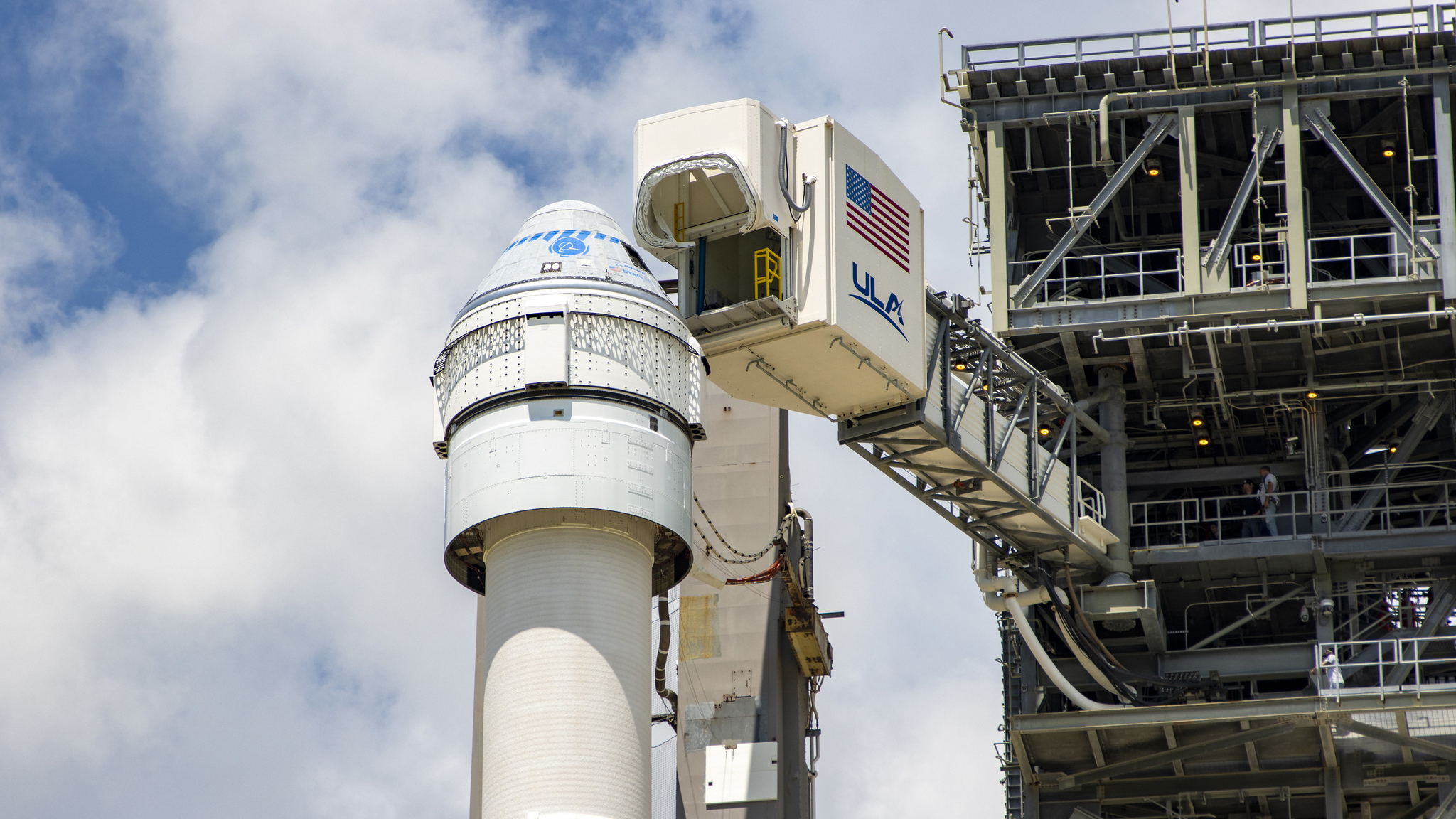
Boeing's Starliner astronaut taxi may not get off the ground this year after all.
Boeing and NASA had originally aimed to launch Starliner's Orbital Test Flight 2 (OFT-2), a crucial uncrewed trial mission to the International Space Station (ISS), from Florida's Cape Canaveral Space Force Station on July 30. But preflight checks revealed 13 stuck valves in Starliner's service module, nixing that liftoff plan.
Engineers are still troubleshooting the Starliner valve problem. That fact, combined with a busy launch schedule over the coming weeks and months, could well push OFT-2 into 2022, NASA officials said.
In photos: Boeing's Starliner OFT-2 mission in pictures
"I think right now, the timeline and the manifest through the end of the year is pretty tight," Kathy Lueders, head of NASA's Human Exploration and Operations Mission Directorate (HEOMD), said during a call with reporters on Tuesday (Sept. 21). "So, my gut is it would be probably more likely to be next year. But we're still working through that timeline."
Boeing and NASA teams are currently evaluating whether to put a different service module on Starliner for the OFT-2 mission or to proceed with trying to fix the current one, she added. A decision on that could come in the next few weeks.
Boeing has been developing Starliner with the help of funding from NASA's Commercial Crew Program, which selected the aerospace giant and SpaceX to fly agency astronauts to and from the orbiting lab. SpaceX has already launched two operational crewed missions to the ISS with its Crew Dragon capsule and is gearing up to launch another one next month. But Starliner still needs to ace an uncrewed trip to the station before it can carry astronauts.
Get the Space.com Newsletter
Breaking space news, the latest updates on rocket launches, skywatching events and more!
As its name suggests, OFT-2 will be the Boeing capsule's second try at this important test mission. During its first attempt, in December 2019, Starliner suffered several serious software glitches, got stranded in an orbit too low for an ISS meetup and landed back on Earth after orbiting solo for two days.
Starliner and OFT-2 were sidelights in Tuesday's teleconference, which NASA organized to help explain its newly announced decision to split HEOMD into two new directorates. Lueders will lead one of those new branches, the Space Operations Mission Directorate. The other, the Exploration Systems Development Mission Directorate, will be helmed by Jim Free.
Mike Wall is the author of "Out There" (Grand Central Publishing, 2018; illustrated by Karl Tate), a book about the search for alien life. Follow him on Twitter @michaeldwall. Follow us on Twitter @Spacedotcom or Facebook.
Join our Space Forums to keep talking space on the latest missions, night sky and more! And if you have a news tip, correction or comment, let us know at: community@space.com.

Michael Wall is a Senior Space Writer with Space.com and joined the team in 2010. He primarily covers exoplanets, spaceflight and military space, but has been known to dabble in the space art beat. His book about the search for alien life, "Out There," was published on Nov. 13, 2018. Before becoming a science writer, Michael worked as a herpetologist and wildlife biologist. He has a Ph.D. in evolutionary biology from the University of Sydney, Australia, a bachelor's degree from the University of Arizona, and a graduate certificate in science writing from the University of California, Santa Cruz. To find out what his latest project is, you can follow Michael on Twitter.









